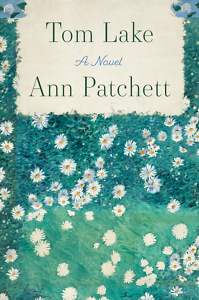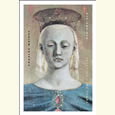Art and Intimacy
Tom Lake is Ann Patchett at her best
Published four years ago, Ann Patchett’s The Dutch House was that rara avis: a deftly crafted Pulitzer-Prize finalist that graced the New York Times bestseller list for weeks. (In 2021 she followed up with a superb collection of essays, These Precious Days.) Her books move with a gentle, assured rhythm, evoking authentic nostalgia that veers clear of sentimentality while conducting little experiments of narrative subversion beneath placid surfaces. Amid seismic tensions she layers beautiful chapter on beautiful chapter; no other American writer pulls this off with such finesse. Quotidian lives, she suggests, are often the most radical.

Her new novel, Tom Lake, is Patchett at her best. In the early months of the COVID pandemic, her protagonist and narrator, Lara Kenison, 57, hunkers down with her husband, Joe, on their fruit farm in northern Michigan. Their three grown daughters — Emily, an agriculturalist who works the property with her fiancé; Maisie, a veterinarian-in-training; and Nell, an artsy undergraduate — have gathered to wait out the plague and help with the cherry harvest in the meantime.
In her youth Lara pursued a career as an actress, reprising the role of Emily in Our Town, from a walk-on performance in her native New Hampshire to summer stock in the bucolic enclave of Tom Lake, which brought her to Michigan. (Along the way she did stints in Los Angeles and New York, auditioning for an Off-Broadway production starring the late Spalding Gray, but those venues were more stations of the cross than artistic affirmations.) Her daughters are enthralled by their mother’s thespian past, and as they roam the groves, picking “sweets” and “tarts,” she tells the tale in full.
Or does she? Lara gets caught up in her memories and her daughters’ enthusiasm, but she’s careful to withhold crucial information. Although he’s largely offstage, tending to the farm, Joe’s more complicit than he lets on. Patchett painstakingly embroiders her characters:
Emily is tall like her father, strong enough to hoist full lugs all day long. Maisie is smaller than her older sister, though by no means small, and her curls gave her extra stature. Nell is like me, or Nell is like I was. It’s as if the genetic material from which these girls were made diminished with every effort, so that the eldest daughter is strapping and the middle is middling and the youngest is a wisp. They might as well have been three birds. I flick away a tiny green inchworm.
Note that subtle flick, how the gesture grounds Lara’s insights amid the cherry trees. Bit by bit Lara relates her long-ago romance at Tom Lake when, as a 24-year-old, she shared the spotlight and a bed with Peter Duke, a handsome, now-famous movie star. Her daughters want to know everything.
 The trope of plays and musicals are fashionable in our contemporary literature, as leading authors — Rebecca Makkai, Mona Awad, and Susan Choi among them — tap our fascination with theater. Patchett captures the magic as well. Lara and Peter are cast in both Our Town and Fool for Love, and the plots thicken as the actors circle around each other, sparks flying in and out of rehearsals. Patchett’s wordplay delights: “The actual stage manager, as opposed to the actor playing the Stage Manager, sat with the assistant stage manager,” Lara observes. “I waved to them collectively and they waved back.”
The trope of plays and musicals are fashionable in our contemporary literature, as leading authors — Rebecca Makkai, Mona Awad, and Susan Choi among them — tap our fascination with theater. Patchett captures the magic as well. Lara and Peter are cast in both Our Town and Fool for Love, and the plots thicken as the actors circle around each other, sparks flying in and out of rehearsals. Patchett’s wordplay delights: “The actual stage manager, as opposed to the actor playing the Stage Manager, sat with the assistant stage manager,” Lara observes. “I waved to them collectively and they waved back.”
Many (most?) novelists delve into familial frictions and twisted roads to maturity, but Patchett’s depictions of close relationships open up into sprawling murals, posing questions about the salience of art and intimacy in our troubled age. She counterposes Lara’s secret history with the stresses of quarantine. Lara recognizes her younger, more vulnerable self in her tenderhearted daughter:
Just like that Nell is crying and sobbing, a fierce storm blown up out of nowhere. She turns her back on Maisie and Emily in shame and presses her face against my breastbone. … She has lost these months to the pandemic, being stuck on the farm with no idea how much longer she will have to stay. … But really, she is crying for me. While her sisters stand and stare in utter bafflement, Nell the Mentalist has snapped all the pieces together.
Pain, Patchett implies, is the gateway to enlightenment, but Tom Lake teems with various and sundry charms and her bone-deep optimism. Another selling point: She nails the details, from the business of stoned fruits in this book to Philadelphia’s architectural marvels in The Dutch House, and so on. She’s not content with a fresh slant on parent-child relationships; she offers up tutorials on topics we didn’t know we needed. Across her oeuvre Patchett has proven herself a generous, meticulous mentor, and Tom Lake is one of this year’s triumphs.

Hamilton Cain is the author of This Boy’s Faith: Notes from a Southern Baptist Upbringing and a frequent reviewer for O, the Oprah Magazine; the Minneapolis Star Tribune; and The Barnes & Noble Review. A native of Chattanooga, he lives in Brooklyn, New York.


